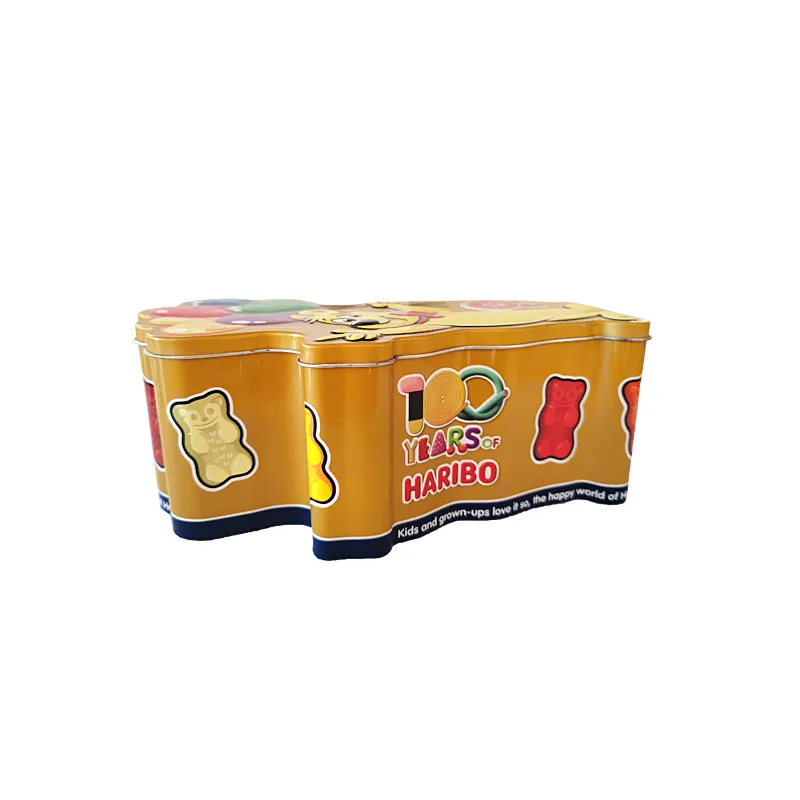With the popularity of DIY baking, more and more people are trying to make various delicacies at home. In this process, it has become a common practice to use different types of containers to bake food. Among them, some people use cookie tin cans to bake food. However, is it safe to bake with cookie tin cans?
This article will discuss this issue in detail from the aspects of the materials, usage risks and safety precautions of cookie tin cans.

Materials and structure of cookie tin cans
Common materials
Cookie tin cans are usually made of the following materials:
● Tin: Traditional cookie tin cans are mostly made of tin, which is a metal with good ductility and corrosion resistance.
● Aluminum: Many modern cookie tin cans are made of aluminum, which has good thermal conductivity and lightness.
● Tin-plated steel: Some cookie tin cans are made of tin-plated steel sheets, which have both the strength of steel and the rust-proof properties of tin.
● Plastic: Some cookie tin cans are made of plastic for non-food grade purposes, or have a plastic layer on the outside of the packaging.
Structural features
The structure of a cookie tin can is usually simple, mainly consisting of a can body and a lid. The can body can be cylindrical, square or other shapes, while the lid is usually snap-on or screw-on to ensure sealing.

Potential risks of baking with cookie tin cans
After understanding the materials and structure of cookie tin cans, we need to evaluate the potential risks of baking with cookie tin cans. These risks mainly include the following aspects:
Material safety
The safety of cookie tin can materials is the most important consideration during use. The following is a safety analysis of different materials:
● Tin and tin-plated steel: Tin and tin-plated steel are relatively safe under normal use, but when baked at high temperatures, harmful substances may be released, especially when there are coatings or printed patterns in the can, these coatings and inks may decompose and release toxic substances at high temperatures.
● Aluminum: Aluminum cookie tin cans have good thermal conductivity, but they may react with acidic or alkaline foods at high temperatures to produce harmful compounds. Although aluminum food containers are usually treated to reduce this risk, non-food grade aluminum products are not recommended for baking.
● Plastic: Plastic cookie tin cans are not suitable for baking because high temperatures can cause plastic to deform and release harmful chemicals.
Structural stability
Whether the structure of the cookie tin can can withstand the high temperatures during baking is also a question to consider. Cookie tin cans are usually designed to store food rather than for high-temperature baking, and their structure may not be stable enough. In a high-temperature environment, the can body may deform or even crack, causing food damage or safety accidents.
Food hygiene
Baking food with cookie tin cans, especially old or recycled cookie tin cans, may have hygiene issues. The odor or bacteria of old food may remain in the can, affecting the quality and hygiene of newly baked food.
Precautions for safe use of cookie tin cans
Although there are certain risks in baking with cookie tin cans, these risks can be reduced to a certain extent by taking appropriate measures. Here are some precautions for safe use of cookie tin cans:
Confirm material safety
Before using a cookie tin can for baking, you should confirm the safety of the can material. Try to choose a cookie tin can made of food-grade materials and ensure that there are no harmful coatings or inks. If you are not sure whether the material is safe, it is recommended to avoid using it for baking.
Control baking temperature
Cookie tin cans are usually not designed for high temperature environments, so the temperature should be controlled during baking to avoid excessive temperatures. It is generally recommended that the baking temperature should not exceed 200℃ to reduce the risk of material decomposition and structural deformation.
Avoid long-term use
Try to avoid using cookie tin cans for baking continuously for a long time. Long-term high temperature environment will increase the risk of aging and deformation of the can body. The can body should be carefully inspected after each use to ensure that there is no damage or abnormality.
Perform hygienic cleaning
Before using cookie tin cans for baking, be sure to thoroughly clean and disinfect them. Use warm water and detergent to wash the can body to ensure that there is no residue and odor inside. For old or recycled cookie tin cans, more attention should be paid to hygiene issues to ensure safety.

Alternatives and suggestions
In view of the certain risks of using cookie tin cans for baking, it is recommended to consider using safer and more professional baking utensils. Here are some alternatives:
Professional baking trays and baking molds
Professional baking trays and baking molds are usually made of food-grade metal or silicone, designed for high-temperature baking, and have higher safety and stability. Choosing the right baking tray and baking mold can ensure the baking effect and food hygiene.
Silicone baking utensils
Silicone baking utensils have good high temperature resistance and anti-stick properties, suitable for various baking purposes. Silicone baking utensils are soft and easy to demold, easy to clean, and are a good choice for safe baking.
Disposable baking utensils
Disposable baking utensils such as aluminum foil baking trays or paper baking molds are easy to use and can be directly discarded after baking, avoiding cleaning and storage problems. Especially suitable for family gatherings or temporary baking needs.

